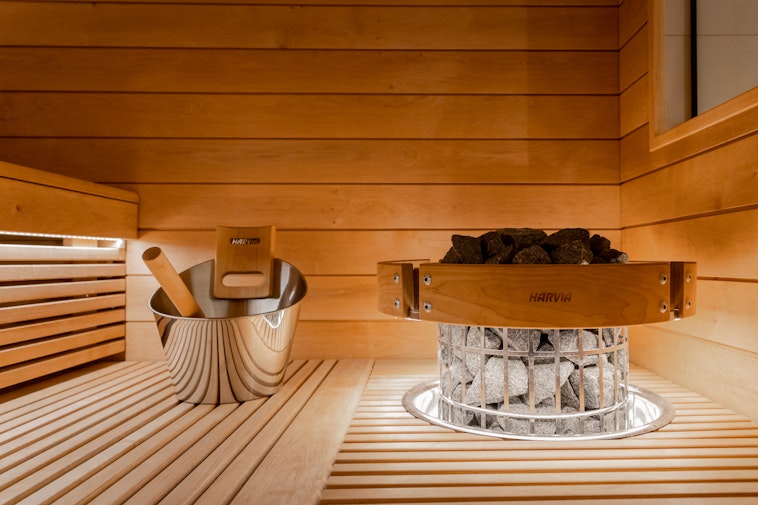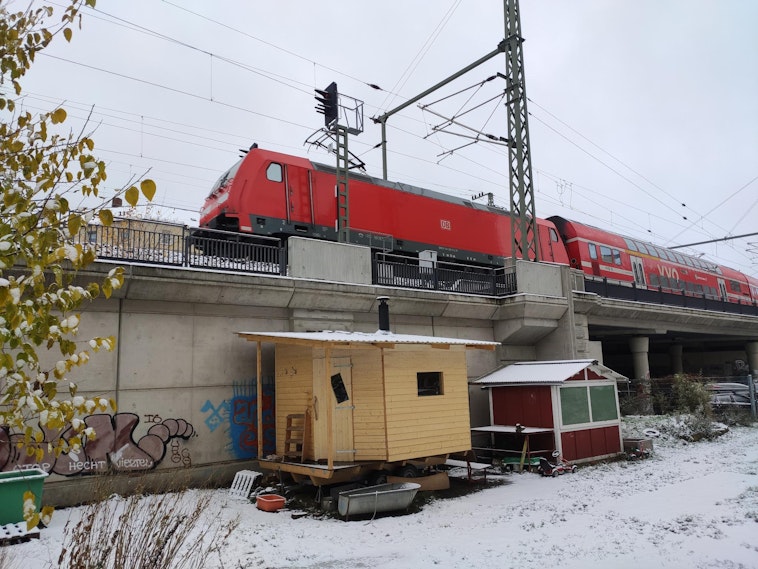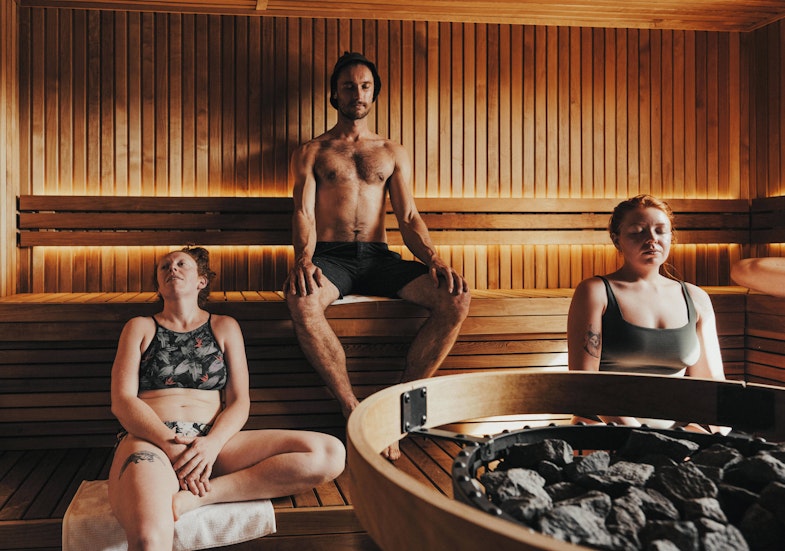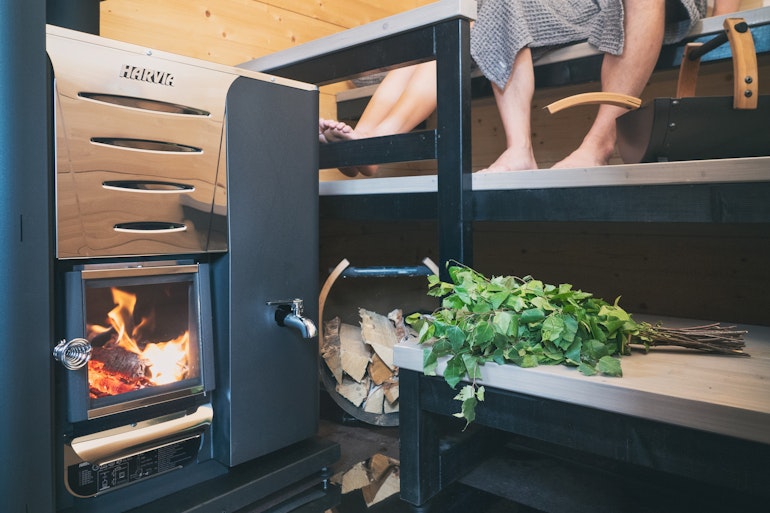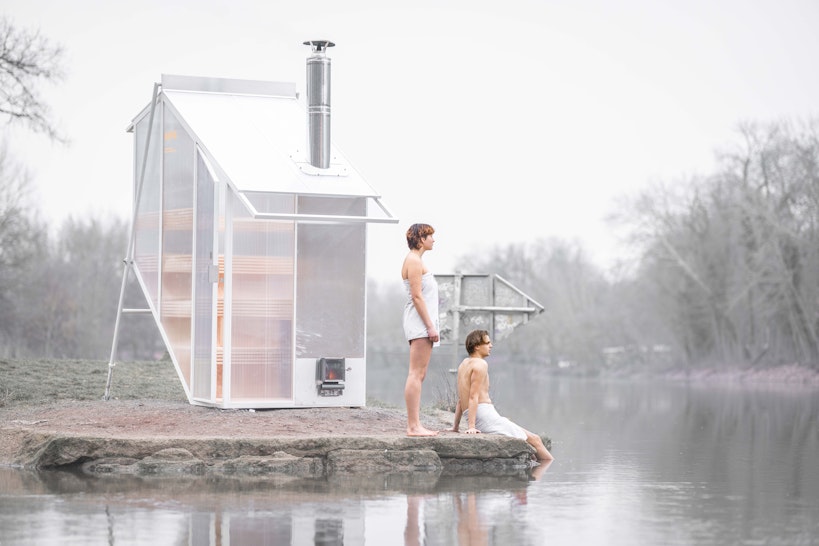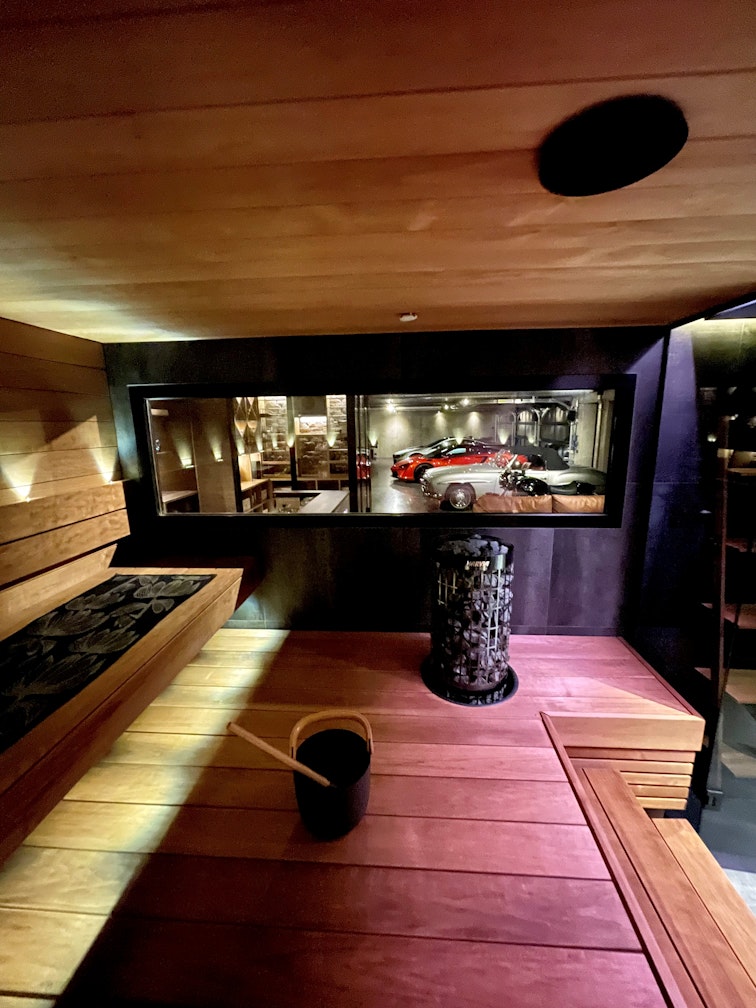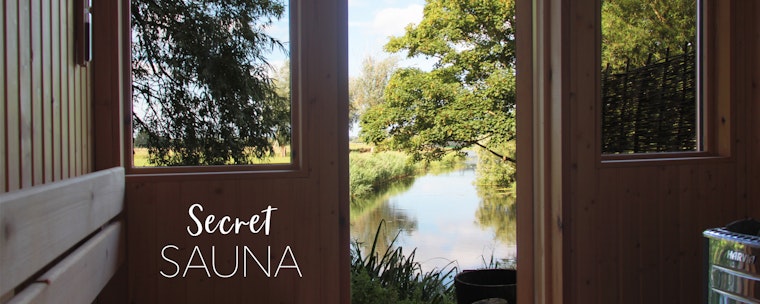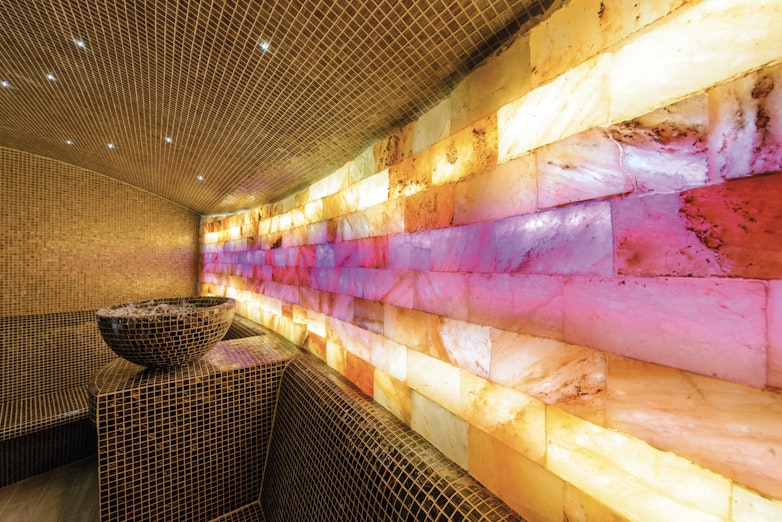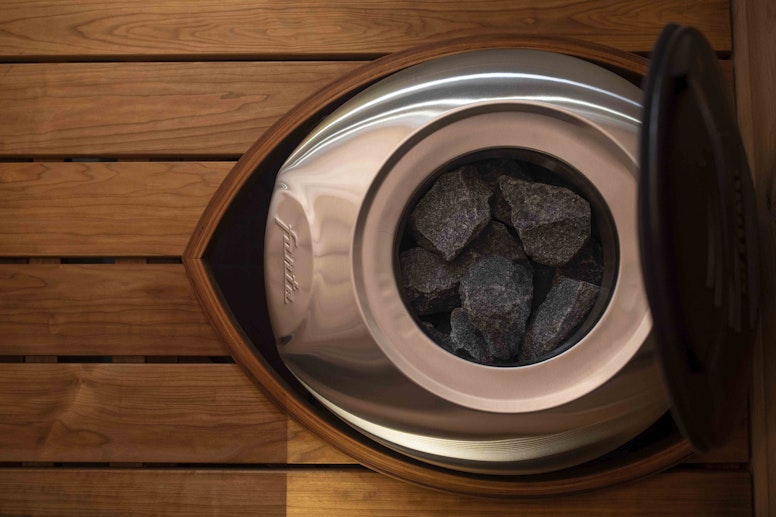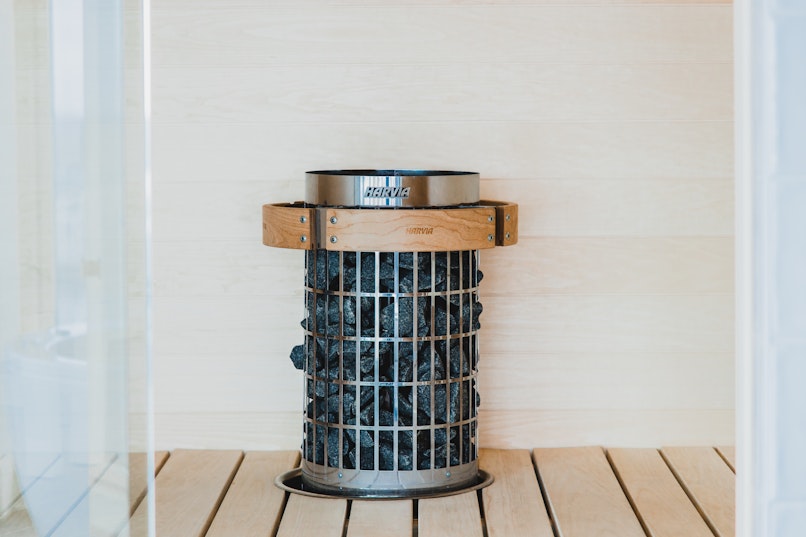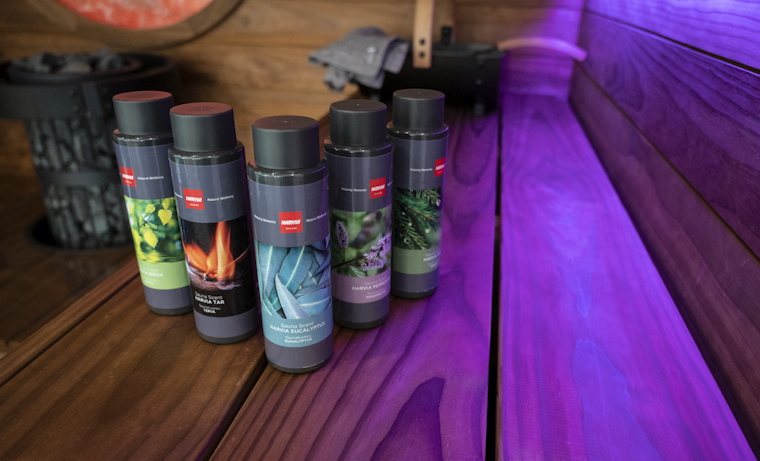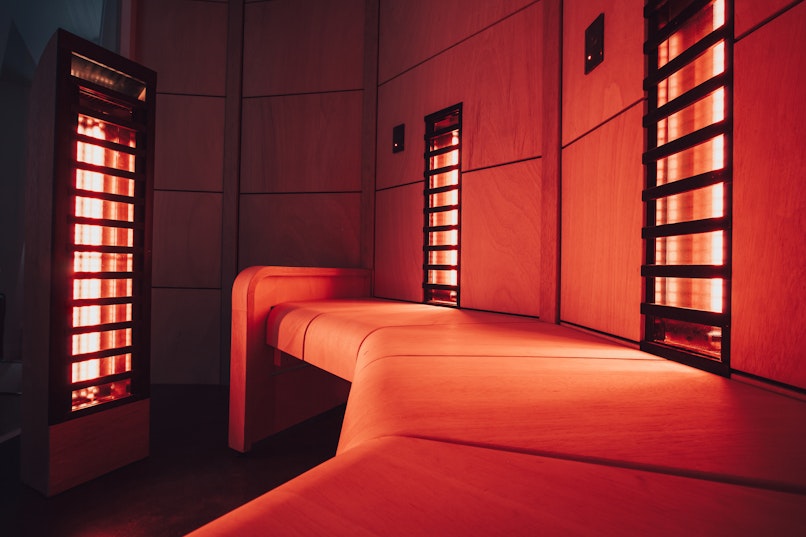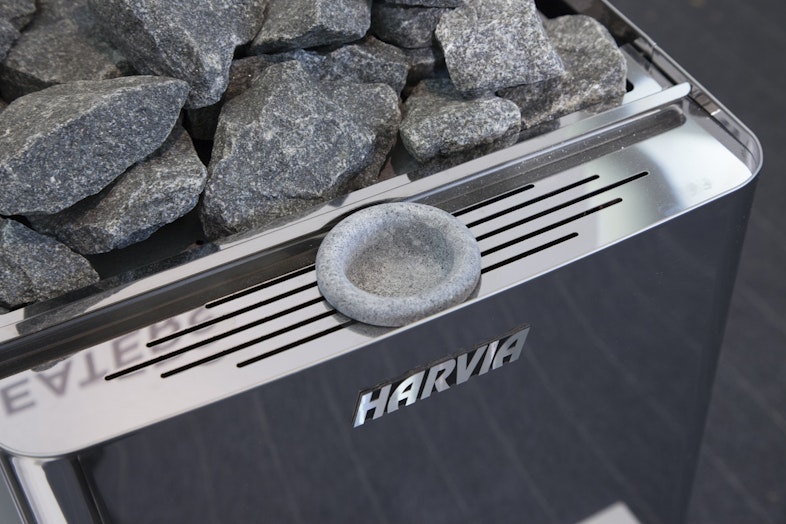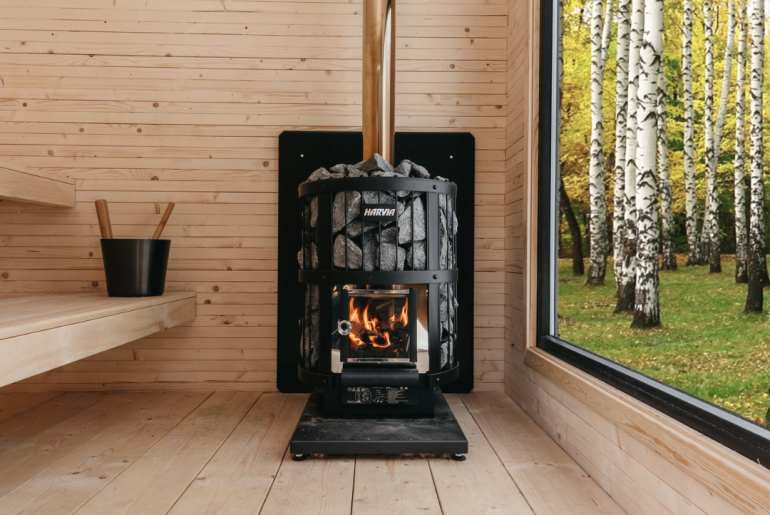How do different wood qualities differ?
Porous wood qualities, that are low in density, are often used in saunas as they don’t heat up too much and are comfortable to sit or lean on.
The biggest difference between wood qualities is the color and shade, which can range from very dark to very light. Some wood types show the knots and natural features more so than others.
A second noticeable difference between the materials is how well they handle the moisture. Spruce, one of the more traditional materials, is the best in handling moisture. When considering woods which tolerate moisture, spruce is followed by pine, alder, aspen and heat-treated alder. For example, heat treated alder is very dark and elegant in color, though due to the heat treatment it has the tendency to absorb more moisture.
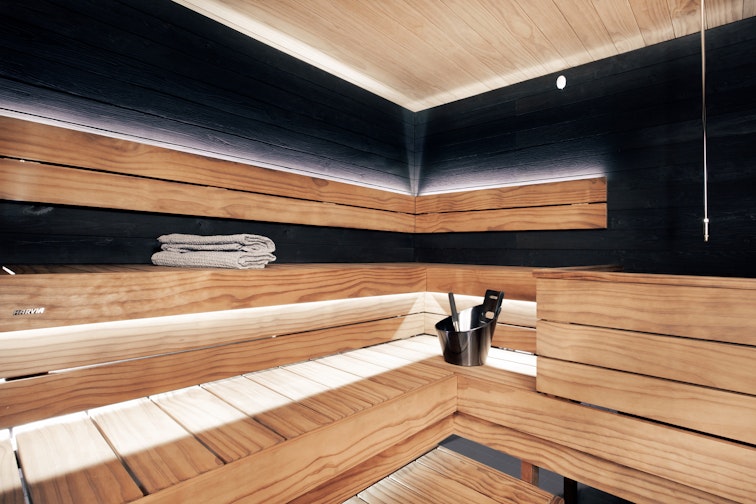
How does heat treated wood differ from other wood qualities?
Heat treated wood is, as the name infers, treated in high heat. Heat treating allows for beautiful dark tones in the color and it minimizes any warping that might occur over time.
Heat treated wood is slightly more fragile than regular wood, and more porous, so it absorbs moisture more easily. We recommend using paraffin oil to protect all appropriate wood types.
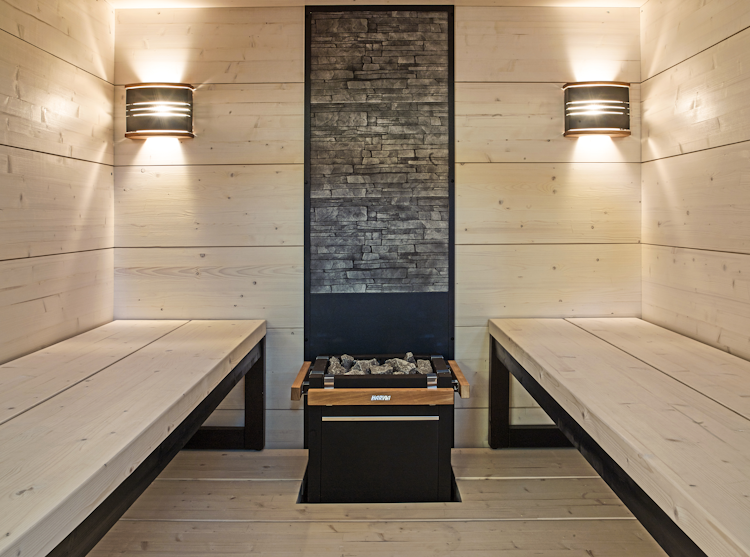
What wood qualities are best suited for an outdoor sauna, which stands in the cold for longer times? What about at home indoors?
The best type of wood used in an outdoor sauna to withstand low temperatures is spruce. The resin inside the wood protects it from moisture.
For a home sauna, you can use almost any material, according to your preference. Regular use of the sauna and maintenance of wooden surfaces is the most important part. If the sauna is high in humidity and a lot of water is used, drying the space and the materials afterwards is necessary to prevent deterioration over time. The right use and maintenance is important regardless of the material used.
Sustainability is important for me, how can I take this into consideration?
Choose wood qualities that are not endangered, such as spruce, alder, aspen, heat treated alder, or heat-treated pine. Make sure your supplier uses wood that is grown sustainably and PECF certified.
Read more from the PECF site.
Harvia only uses sustainably sourced wood.
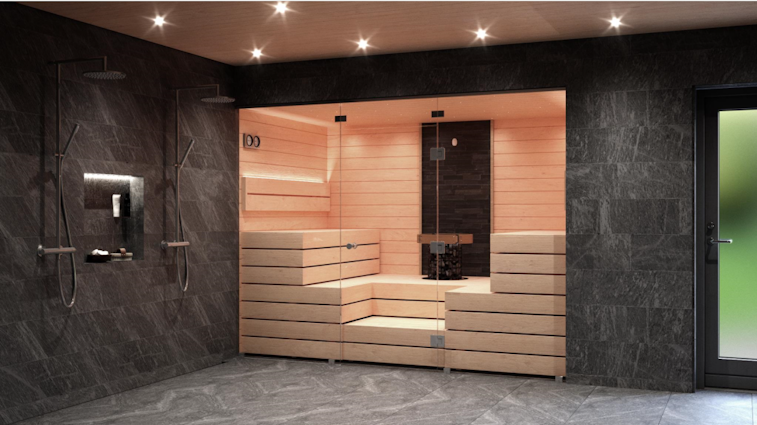
I want benches that are set opposite each other. In what kind of space is appropriate and what should I consider?
In this design, opposite benches require enough space in width. The upper benches require enough space to sit and you should still have enough room for your legs. The heater is often placed between the benches, which also takes up room from the feet. With opposite benches, it is often wise to think about the position of the heater’s embedding flange and guardrail, so that it takes up as little space as possible.
If the sauna is large enough, there will be room for feet even around the heater. As a rule of thumb, the minimum width of a sauna should be 2200mm, with 2500mm giving some extra legroom for the users.
How should the benches be attached to the sauna?
Normally benches are attached to the walls either directly or via a support beam. It is important to use long enough screws to make sure they hold well over time. If attaching them to the wall is impossible, the benches can also be attached to a supporting element on the floor underneath. Harvia provides screws and support beams with the benches.
How much space should there be between the upper bench and the roof?
Our recommendation for the distance between the upper bench and the roof is 1100-1200 millimeters. Less will suffice, if the people enjoying the sauna are short. Too much space above the user’s heads means that heat will be wasted near the ceiling
How deep should the benches be?
Depth of the upper-level sauna benches should be at least 500mm. If you want to lay on the benches or sit with your feet on the bench, it is recommended the depth of the bench should be 600 mm or more. However, too much depth on the upper bench, creates the inconvenience of leaning unnaturally while sitting.
What is the right width for the benches?
The width of the benches is determined by the available space and the number of sauna users. Usually, 600 mm is a good rule of thumb for one sitting place. However, if you want more room for sitting then you can expand this measurement.
What’s the right height for steps?
The right height for steps is 350mm. If there are users, who are challenged by this, the lower bench be set up as two steps, to make the distance more comfortable.
What kind of saunas are right for an embedded heater?
A heater can be embedded into almost any bench design. What’s more important is the size of the sauna and where the embedded heater will be placed in the benches. Placement of the door often affects where the heater can be embedded. Based on the heater model, the design should ensure enough space is available for embedding the heater into the bench.
When do I need a safety railing for the heater?
A safe sauna ensures that you shouldn’t be able to accidentally stumble or step on the heater in any way. Safety measures reduce the risk of stumbling or falling in the sauna. In the end, the local building instructor will make the decision of whether a safety rail needs to be installed, but often common sense is your best advisor in this issue. If you think that there is a chance that the heater is unsafe without a safety railing (for example, with children or elderly people) then the inspector might think the same. Harvia offers wooden safety rails both on the heater as well as to its sides.
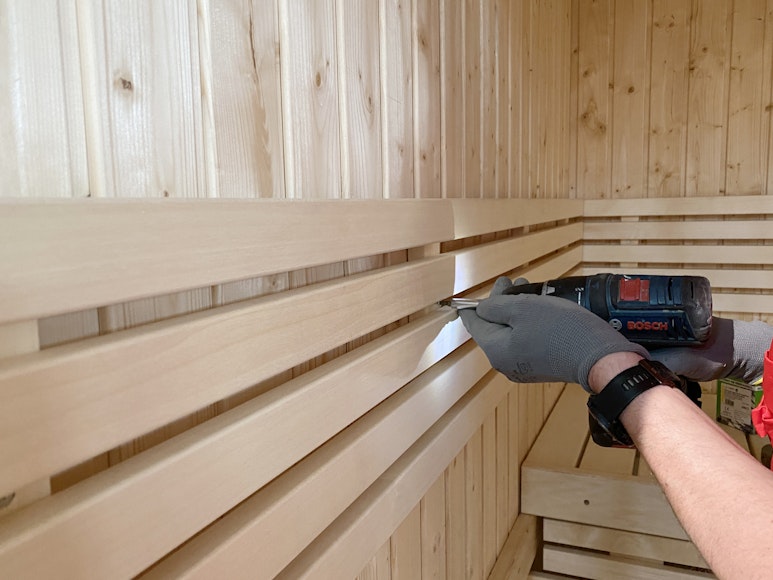
Can I install the benches myself or do I need a professional?
You can install benches by yourself. If you can handle IKEA cabinets, you probably won’t need a professional to install the benches either. The ready-made bench packages come with instructions and pictures to get the job done.
How do I maintain my benches so that they will last as long as possible?
All bench materials which do not have any surface treatment are recommended to be treated with paraffin oil. Paraffin oil protects wood from moisture and dirt. The paraffin oil treatment should be renewed approximately once or twice a year, depending on the use of the sauna. A good rule of thumb is that if water immediately absorbs into the wood, it is time to re-oil the benches.
The use of a seat cover also protects the benches and should always be used. After sauna use, benches should be given adequate time to dry.
